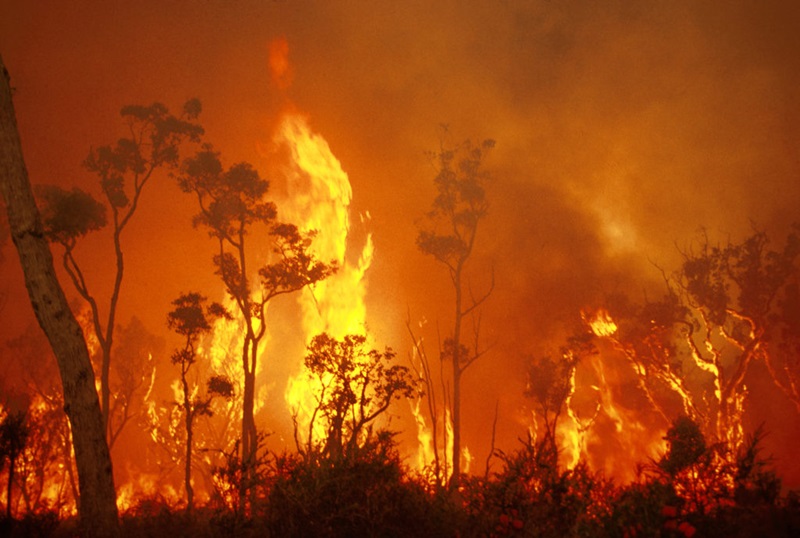Unraveling the Significance of a Thorough BAL Report for Your Home
Unraveling the Significance of a Thorough BAL Report for Your Home
Blog Article
Exactly How BAL Record Impacts Bush Fire Security Actions
In the realm of bush fire security, the Structure Attack Level (BAL) record stands as a critical tool that dramatically influences the security and strength of homes in fire-prone locations - BAL Report. The influence of a BAL analysis extends far beyond simple documentation; it works as the cornerstone for identifying the proper building and construction standards and fire protection procedures essential to mitigate the risks positioned by bushfires. As neighborhoods come to grips with significantly extreme fire periods, recognizing just how the BAL record forms these safety procedures ends up being extremely important for home builders, home owners, and policymakers alike
Recognizing the Bushfire Attack Degree

Relevance of BAL Record Analysis

Furthermore, the BAL record analysis works as a foundational action in adhering to legal responsibilities and demands connected to bushfire security. Local councils and authorities usually mandate the entry of a BAL record as component of the preparation and building authorization process to make sure that buildings are adequately guarded against bushfire threats. Falling short to perform a detailed BAL report assessment can lead to poor protection actions, leaving homes susceptible to devastating bushfire incidents.
Construction Standards Based Upon BAL
A thorough understanding of the Bushfire Strike Degree (BAL) enables homeowner to implement building and construction requirements tailored to their details danger profile. Construction criteria based on BAL are essential in mitigating the influence of bushfires on buildings. The BAL score classifies the possible danger a home faces throughout a bushfire on a scale from BAL-Low to BAL-FZ (Fire Zone) Each BAL degree corresponds to details building requirements detailed in the Australian Basic AS3959-2018 Building And Construction of Buildings in Bushfire-Prone Locations. Residential properties classified as BAL-Low may just call for basic procedures such as getting rid of debris and preserving yards, while those in greater BAL categories need even more durable measures like ash displays, fireproof materials, and sealed home windows. Adhering to these building criteria not just boosts the structural durability of the property but likewise enhances the general safety and security of residents during a bushfire event. As a result, building proprietors must thoroughly consider their BAL score and follow Resources the matching building and construction criteria to effectively guard their homes and occupants.
Carrying Out Fire Protection Steps
With the foundation of construction standards based on Bushfire Attack Level (BAL) in place, the emphasis currently changes in the direction of the functional application of fire security steps to fortify buildings versus bushfire dangers. Easy measures include using fire-resistant structure products, setting up cinder guards on vents, sealing gaps in wall surfaces and roofings, and preserving a clear space around the residential property complimentary from flammable plants. By integrating both passive and active approaches, properties can significantly minimize their vulnerability to bushfire cases and boost the safety of occupants.
Shielding Houses Versus Bushfires
Successfully safeguarding homes versus the damaging influences of bushfires needs a comprehensive and positive strategy to fire security actions. Property owners staying in bushfire-prone areas need to prioritize the application of numerous techniques to boost their building's durability versus wildfires. One fundamental element is creating a defensible area around the home by maintaining a clear area without combustible materials. This consists of regularly cutting plants, removing dead plants, and ensuring a secure range between frameworks and trees. Mounting fire-resistant roofing materials can additionally dramatically reduce the danger of ash attacks and straight fire get in touch with. In addition, securing vents and gaps to avoid cinder invasion, in addition to integrating fireproof windows and doors, can aid strengthen the home's protection versus bushfires. Purchasing a reliable water source, such as a well-maintained lawn sprinkler or a dedicated water tank, is important for supplying water throughout fire emergency situations - BAL Report. By accepting an aggressive position and integrating these protective steps, property owners can considerably enhance their possibilities of protecting their homes against bushfires.
Final Thought
To conclude, the Bushfire Strike Level (BAL) record plays a critical function in identifying the necessary defense steps against bushfires. By examining the BAL, construction standards can be customized to alleviate the dangers and ensure the security of homes my sources in fire-prone areas. Implementing fire defense procedures based upon the BAL report is essential in securing residential properties from potential bushfire dangers. It is vital for home owners to prioritize BAL analyses and stick to suggested building and construction standards to improve bushfire strength.
In analyzing bushfire risk to homes, recognizing the Bushfire Strike Degree (BAL) is a crucial element for carrying out reliable security procedures. On the whole, a clear understanding of the Bushfire Strike Degree is important for carrying out appropriate security actions and mitigating the effect of bushfires on buildings.

Report this page